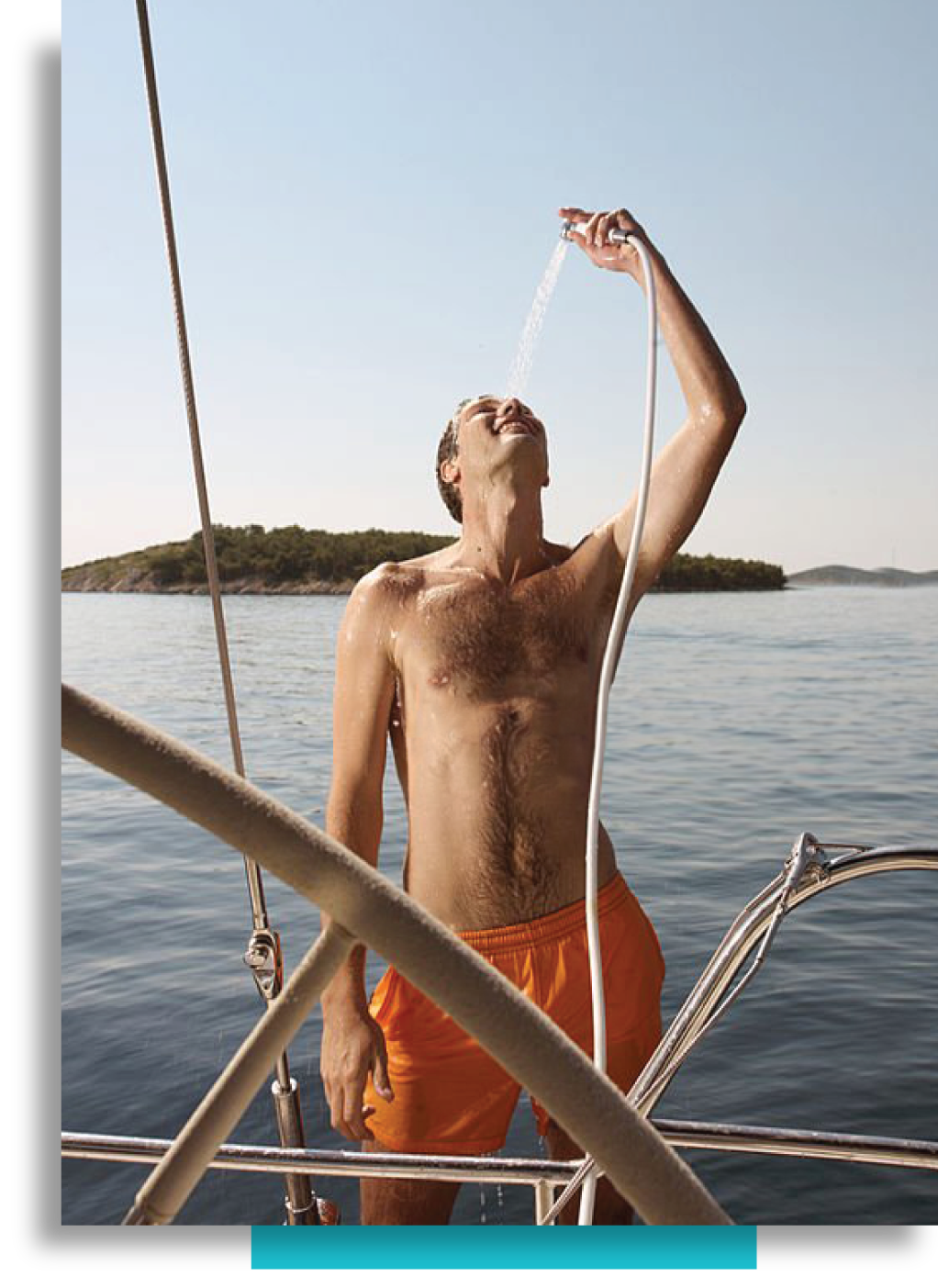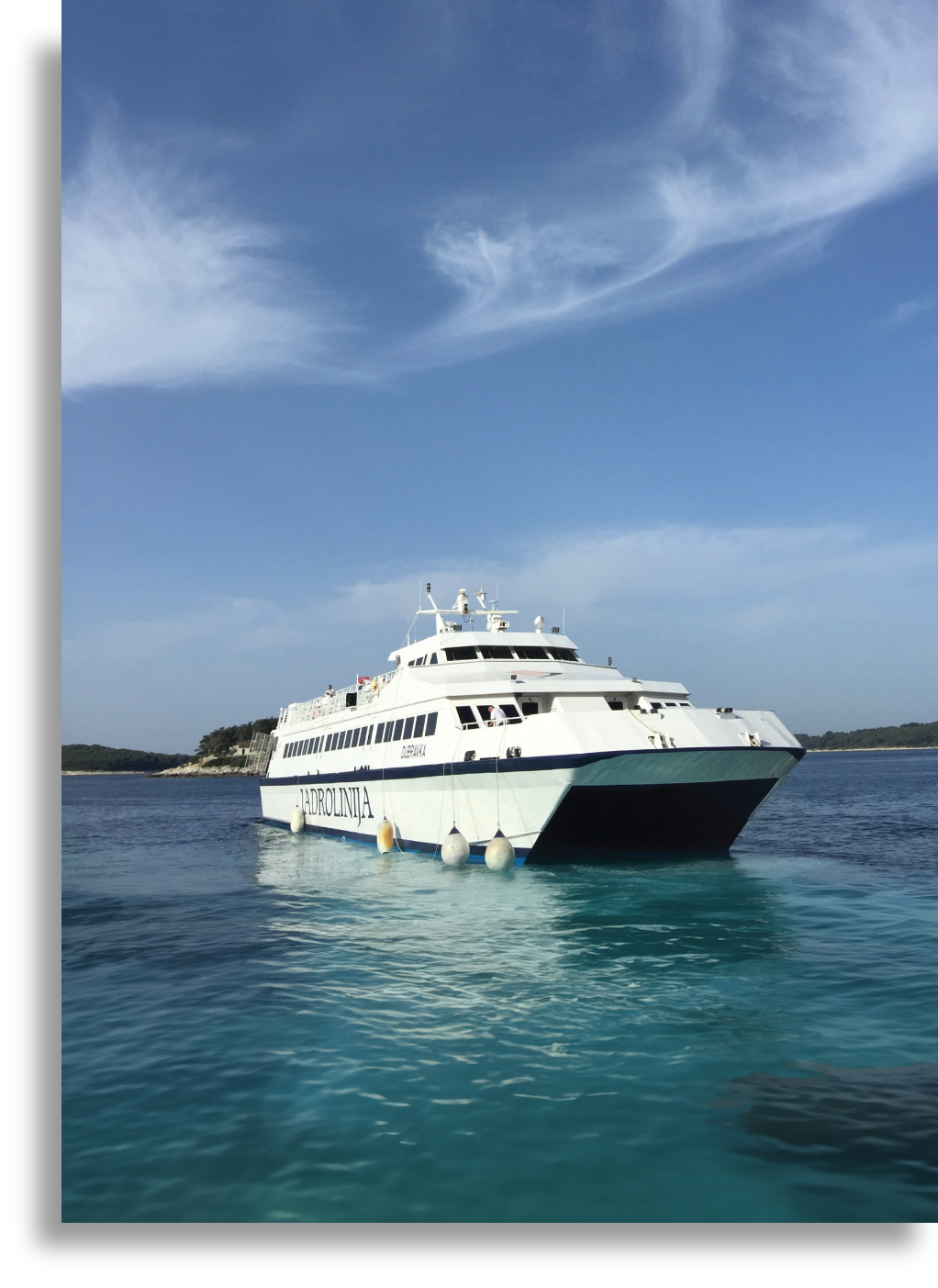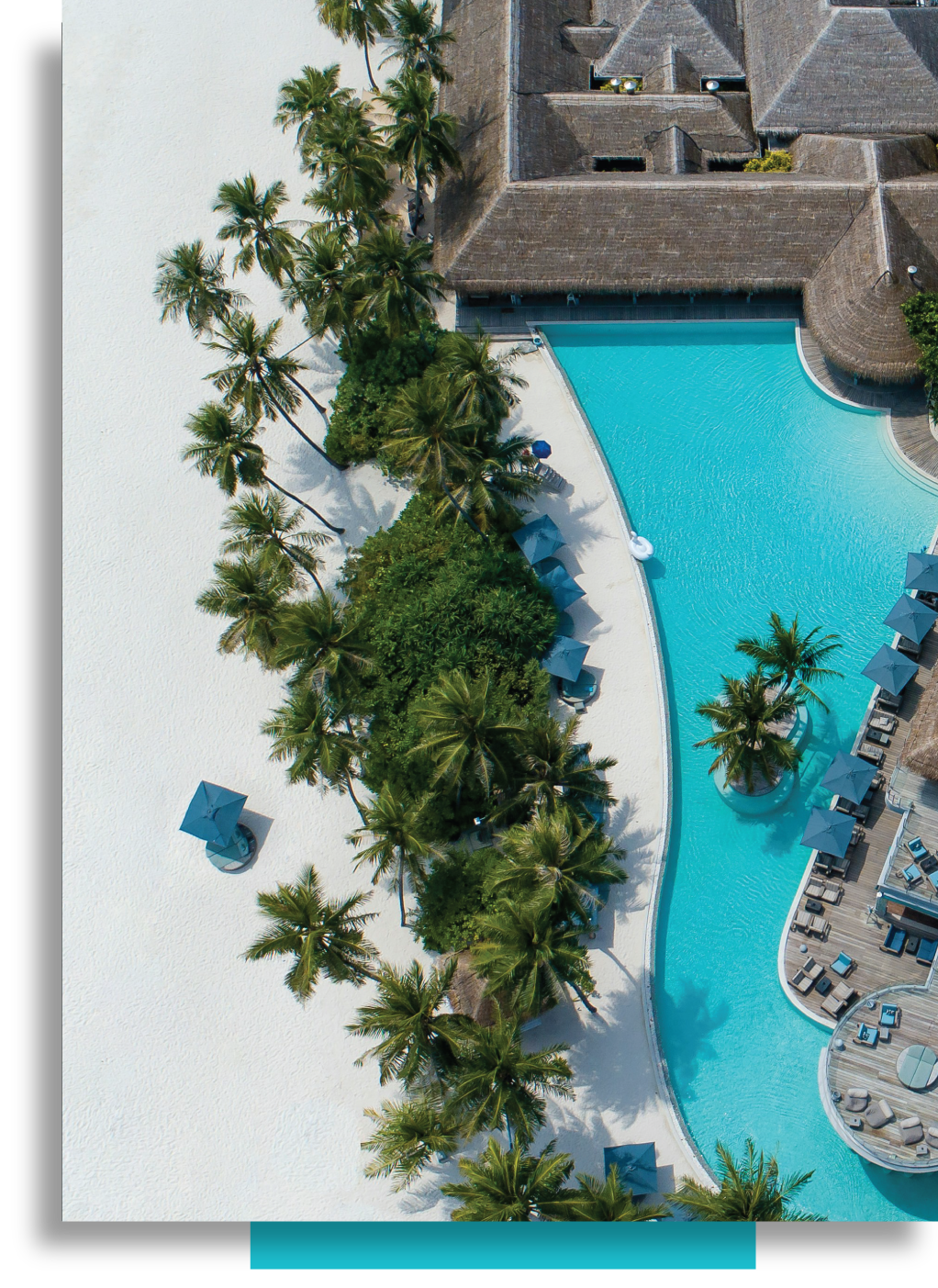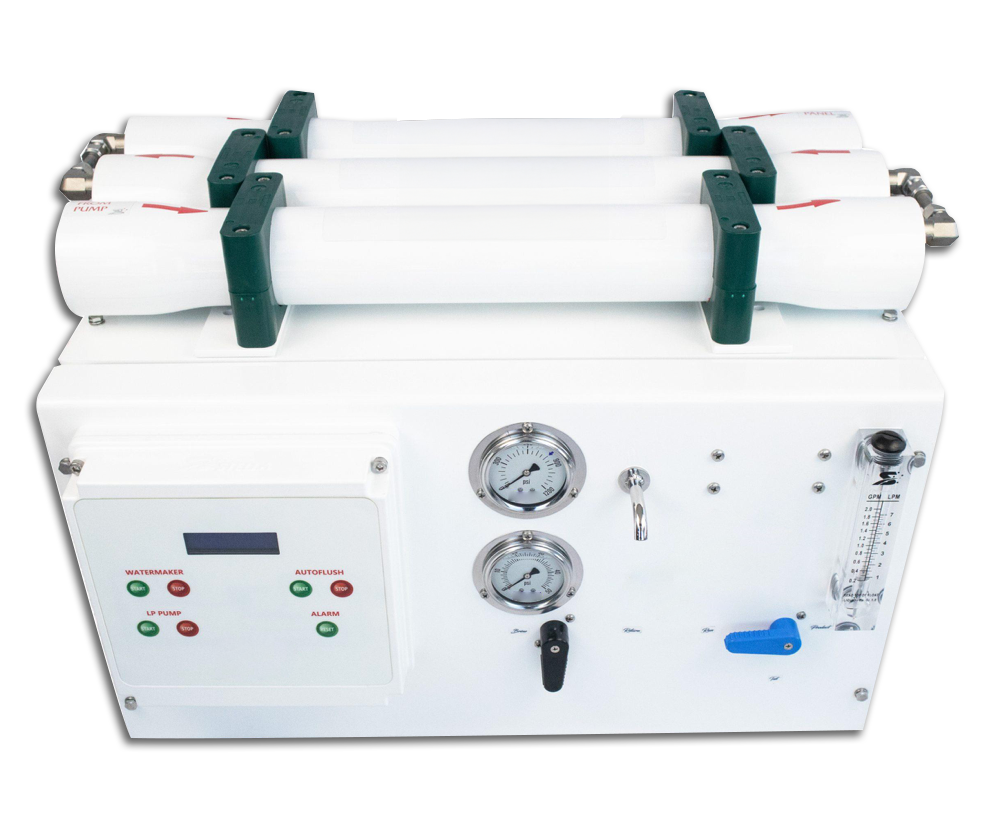Watermakers
With our respected team of product, sales and service professionals, Australian Marine Sales is your ‘one-stop’ solution for all your boating needs, including expert installation services


Recreational Vessel Watermakers
Australian Marine Sales ensures your vessel’s self-sufficiency by supplying and organising installation of Watermakers for private recreational boats, ranging from 30 to 200 feet.
Say goodbye to continuous marina visits with a Watermaker, covering capacities from 45 to 240 litres per hour. Stay worry-free during extended journeys, as a system eliminates the fear of running out of fresh water.
We organise custom build marine desalinators in Australia. We look at your requirements and will recommend fitting options and provide certified installations to your vessel. From manual desalinators to fully automatic systems, we offer a range of solutions tailored to your needs.
Please contact us below using our enquiry form.

AMS Expert Team
At Australian Marine Sales our expert team guides you through the entire process, from selecting the right watermaker for your needs to carrying out supply and organising installation with reputable trades. We work closely with you every step of the way to ensure that your vessel is equipped with the perfect watermaker

BOAT INDEPENDENCE INSTALLED
Empower your boat’s independence! Australian Marine Sales installs watermakers for private boats, sizes 30 to 200 feet.

MARINA-FREE INDEPENDENCE
No more marina trips! Our watermakers, with capacities from 45 to 240 litres per hour, bring independence to you.

VERSATILE WATER SOLUTIONS
Diverse options at your fingertips! Explore our range of watermakers, from fully manual to automatic and hybrid solutions

Commercial Watermakers
Australian Marine Sales specialises in providing watermakers and desalinators tailored for commercial vessel application. From commercial fishing vessels to government fleets, we’ve successfully supplied systems for various applications, including hydro projects and temporary work sites.
Our commercial watermakers, crafted locally are designed to meet survey and commercial standards for their intended purposes. Ranging from 300 to over 1200 litres per hour, our systems are locally built to ensure they previously match the unique requirements of commercial applications.
Land-based Watermakers
Australian Marine Sales offers specialised land-based watermakers and desalinators tailored for commercial islands and resorts.
We ensures unique solutions to meet the diverse needs of land-based river homes, private islands, commercial resorts, mobile van and camper van applications. Designed specifically for land-based facilities, our commercial and recreation watermakers are crafted to fulfil distinct watermaking requirements with efficiency and reliability.
Being able to custom build and engineer desalinator systems to suit your requirements anywhere anyplace.

Tailored Land-based Water Solutions
Elevate water facilities on commercial islands and resorts with our specialised, land-based watermakers.
Contact an AMS Expert Today
Phone: 1300 795 531

Watermakers
Revolutionising Access to Fresh Water On-the-go
Watermakers have become an invaluable asset for long-distance sailors and those living off the grid on the water. Essentially, these devices transform seawater into potable water, ensuring a consistent, reliable source of fresh water during extended marine voyages. The importance of these systems can’t be overstated, as they afford independence from shore-based water supplies and enable extensive cruising in remote areas where fresh water is scarce.
The core of any watermaker is its desalination capability, which removes salt and other impurities from seawater. Various systems are available to suit a range of vessels, from small yachts to large ships. Whether you opt for a compact, portable unit or a more complex, high-capacity system, you’ll find that
watermakers can significantly enhance your self-sufficiency at sea. Selecting the right watermaker involves understanding how these systems work, their maintenance requirements, and the initial investment, which varies widely based on capacity and complexity.
Installation and upkeep are critical components to ensure your watermaker operates efficiently. While some systems are designed for the do-it-yourselfer, others may require professional installation and routine servicing to maintain optimal performance. Regular care will prolong the life of the watermaker and safeguard the quality of the water produced, ensuring that you have access to clean, sustainable, and drinkable water whenever you need it.
Key Takeaways
Watermakers allow for the production of fresh water at sea, enhancing self-sufficiency.
Choosing the right watermaker depends on vessel size, water needs, and system complexity.
Proper installation and maintenance are essential for efficient and sustainable watermaker operation.

What Is a Watermaker?
A watermaker is a device designed to transform seawater into freshwater, making it suitable for drinking and other uses. You’ll find these systems on board yachts, in remote areas, or wherever access to clean water is limited. The mechanism at the heart of most watermakers is reverse osmosis, a process where water is forced through a semipermeable membrane to remove salts, minerals, and other impurities.
Key Components of a Watermaker
- Pre-filtration: This stage removes larger particles such as sediment and silt, protecting the delicate reverse osmosis membrane.
- Reverse osmosis membrane: This is the core component that performs the desalination.
- Post-filtration: This stage may include a carbon filter that further purifies water, removing tastes and odors.
The effectiveness of a watermaker largely hinges on the filtration and purification process. Reverse osmosis demands high pressure from a high-pressure pump to compel seawater through the membrane while retaining salts and other molecules.
The Process
1.
Seawater is drawn into the watermaker.
2.
It undergoes pre-filtration to discard larger contaminants.
3.
Prepared seawater is pressurised and pushed through the reverse osmosis membrane.
4.
The desalinated water is then further purified if necessary.
Maintaining your watermaker
Maintaining your watermaker is crucial for its longevity. Regularly check for clogs, clean the system, and replace filters and membranes as instructed by the manufacturer. Proper care ensures a steady fresh water supply, even amid the ocean.
Why Watermakers Are Important at Sea
When you’re at sea, watermakers are a vital piece of equipment. They utilise desalination technology to convert seawater from the ocean into potable water. This process is imperative for long voyages where the supply of fresh water is limited.
Desalination works by removing salt and other minerals from seawater. Here’s a simple breakdown of the process:
- Seawater Intake: Seawater is drawn into the system.
- Filtration: It’s then filtered to remove large particles.
- Reverse Osmosis: High pressure forces the water through a semipermeable membrane, leaving salt behind.
- Freshwater Output: The desalinated water is now fit for drinking.
By generating fresh water on-board, you reduce dependence on reservoirs of stored water. This saves valuable space and ensures a continuous supply, which is paramount for extended trips or emergencies.
Additionally, watermakers can contribute to a sustainable water usage approach. You’re no longer solely reliant on shore-based water sources, which, in turn, helps to conserve those reservoirs.
Your boat becomes more self-sufficient when it uses a watermaker. It gives you the freedom to travel longer distances without the need for frequent stops to replenish your water supply. This autonomy enhances safety and convenience on the open seas.
Regular maintenance is key to ensuring the system works efficiently and provides clean, safe water throughout your journey.
How Watermakers Work
Watermakers utilise reverse osmosis technology to convert seawater into freshwater, suitable for drinking and other uses. This process hinges on using high-pressure pumps and sophisticated filtration systems to remove salt and impurities from seawater.
Watermaker Desalination Process
The core of a watermaker is the reverse osmosis (RO) system. Here’s how it functions:
- Intake: Seawater is first drawn into the watermaker system.
- Pre-filtration: Seawater passes through a series of filters to remove large particles and debris. Think of this stage as a sieve that catches anything that’s not liquid.
- Reverse osmosis: The pre-filtered seawater is now forced through an RO membrane. This semi-permeable membrane allows only water molecules to pass through, leaving salt and other contaminants behind.
- Freshwater Output: The freshwater, separated from the seawater, is then collected and directed to a storage tank for your use.
High-pressure Pumps
Operation: The high-pressure pump in a watermaker propels seawater through the RO membrane with sufficient force.
Significance: This pressure—typically around 55 to 70 bar—drives desalination. Without it, reverse osmosis wouldn’t occur, as natural osmotic pressure would prevent freshwater from separating from the seawater.
Maintenance: Regular pump maintenance is imperative to ensure the system operates efficiently.

Differences Between Watermaker Systems
Watermaker systems are crucial equipment aboard vessels and in remote locations where access to fresh water is limited. Technology will significantly vary across different systems, influencing their portability, size, and reliability.
Portable Watermakers are lightweight and built for mobility. These units are ideal when you’re limited in space or need an adaptable water source. They often operate manually, so while compact, they may not be as reliable for producing large quantities of water as their larger counterparts.
Compact Watermakers strike a balance between size and performance. Typically electrically powered, they fit well on smaller boats or for users with moderate freshwater needs.
In contrast, Large-scale Systems suit permanent installations or vessels with ample room. They can produce significantly more fresh water and are generally more reliable over the long term due to robust construction and advanced filtration technology. However, these systems demand more maintenance and have higher initial costs.
When choosing your system, consider the space available for the equipment, your freshwater needs, and whether you require a solution tailored for occasional or constant use. While compact and portable options offer convenience, they might fall short in efficiency and reliability. On the other hand, larger systems, despite their lack of portability, guarantee a consistent and high-volume water supply. Always refer to the manufacturer’s guidelines to ensure compatibility with your requirements.
Choosing the Best Watermaker
Selecting the right watermaker involves understanding your specific water production needs, considering the energy it consumes, and assessing the acceptable noise level during operation.
Capacity
Your watermaker’s capacity should align with your daily usage requirements. Evaluate the litres per day each system can produce:
- Small Vessels: up to 120 litres per day
- Medium Vessels: 120–760 litres per day
- Large Vessels: above 760 litres per day
Choose a watermaker with a capacity 20% greater than your estimated daily use to ensure a reliable freshwater supply.
Energy Consumption
The efficiency of a watermaker depends on its energy consumption:
- Manual Systems: low energy but labour-intensive
- Electric Systems: higher energy use; check the wattage
- Engine-driven Systems: tied to engine use; no separate power supply needed
Look for an energy-efficient system that balances power use with water output.
Noise Level
Noise levels can significantly affect comfort on board, particularly in smaller vessels:
- Low-noise Systems: below 60 decibels; suitable for smaller crafts
- Standard Systems: between 60–70 decibels
- Industrial Systems: above 70 decibels; for larger vessels where noise is less of a concern
Consider your tolerance for noise when selecting a system, keeping in mind that quieter units often result in higher costs. Prioritising maintenance ease can prolong the reliable operation of your watermaker while controlling long-term costs.
Tips
Watermaker Installation
When installing a watermaker on your boat, you must equip yourself with the correct equipment and follow the instructions thoroughly to ensure a successful setup.
Preparation
- Gather all necessary equipment as listed in your manual.
- Check that you have all components: pumps, filters, membranes, and necessary plumbing fittings.
Choosing the Location
- Select an area accessible for maintenance and protected from harsh marine environments.
- Ensure the location has adequate space for the system and consider how it will integrate with existing onboard systems.
Electrical Connections
- Make sure your boat’s power supply can handle the additional load.
- Install circuit protection per DIY instructions or have a professional electrician do it.
Plumbing
- Connect the intake line to a clean, below-waterline point.
- Use high-quality marine hoses and double-check for any leaks.
System Testing
- Follow the start-up procedure outlined in your manual.
- Check for leaks and monitor the system during the first run.
Maintenance
- Refer to the maintenance schedule in the manual for filter changes and system checks.
- Record performance data regularly to monitor system health.
Adhering to these guidelines and referring to your specific watermaker’s manual should make your installation process straightforward and successful.
Maintaining Your Watermaker
Routine maintenance of your watermaker is vital to ensure its reliability and durability. Regular service can prevent the need for costly repairs and extend the lifespan of critical components. Your watermaker’s membranes, the heart of the system, demand special attention.
Monthly Checks
- Inspect Pre-filters: Replace them if necessary to prevent clogs.
- Check for Leaks: Early detection could save your system from significant damage.
Biannual Tasks
- Pressure Test: Ensure consistent operation and identify potential weaknesses.
- Valve Inspection: Lubricate and check for wear.
Stick to the manufacturer’s maintenance schedule detailed in your warranty documentation. Using genuine parts during service maintains warranty integrity and system efficiency.
Membrane Care
Keep the membranes clean by flushing them with fresh water after every use. If your watermaker sits idle, biocide should be used to soak the membranes, preventing biological growth.
Always consult your watermaker’s manual for specific guidance; if you have any doubt about your ability to perform maintenance, contact a professional. Their expertise can save you time and ensure that nothing is overlooked.
Remember, diligent upkeep not only maintains the quality of your water supply but also safeguards the functioning of your watermaker over its lifetime.
Care for Your Watermaker
Proper maintenance of your watermaker can significantly enhance its durability and reliability. It’s important to follow a regular service routine to ensure optimal performance. Here’s a straightforward guide to help you keep your system running efficiently:
Regular Flushing: Flush your watermaker regularly with fresh water to prevent the build-up of salts and minerals. Depending on usage, a weekly flush is recommended.
Filter Changes: Replace your pre-filters as the manufacturer indicates, usually every three months, to avoid contamination and maintain water quality.
Storage Solutions: When not in use, especially for extended periods, store your watermaker with a biocide solution or, per the manufacturer’s instructions, to prevent microbial growth.
Keep an eye on consumables such as filters and cleaning chemicals; always have spares on board. For specific accessories related to your model, consult your user manual or your supplier’s website.
Reliable support from your watermaker supplier is paramount if you face any issues. Never hesitate to contact them for guidance on service and parts.
Remember, while maintenance may take time, it is far less costly than repairs or replacements due to neglect. Your diligence will pay off in the prolonged life span of your watermaker.
Cost of Watermakers
When considering a watermaker for your boat or off-grid living setup, you’ll encounter various options with varying costs. The initial investment can range from a few thousand to tens of thousands of dollars, depending on the system’s capacity, brand, and features.
Purchase Price
Standard portable units are typically the most affordable, starting at around AUD 2,000. Mid-range models that produce more fresh water daily generally cost AUD 3,000 to 8,000. If you’re looking for an advanced system with a higher output, be prepared to invest from AUD 10,000 upwards.
Running Costs
Apart from the purchase price, factor in the running costs. These include:
- Replacement Filters: usually around AUD 100–200 annually
- Maintenance: servicing fees or DIY maintenance costs
- Energy Consumption: dependent on your system’s power source
Cost-efficiency
Choosing a higher-priced unit may benefit from increased cost-efficiency over time due to lower energy usage and maintenance requirements. Consider this when comparing options.
Remember, some models offer energy recovery systems, saving you money on power in the long run.
Making a Decision
Review your needs, budget, and long-term costs to determine which watermaker offers the best value for your investment.
Affordable units may have lower initial costs, but consider long-term savings from more efficient, albeit costlier, models.
Frequently Asked Questions
The following FAQs address common queries about the functionality, safety, maintenance, and types of watermakers suited for marine activities.
How do marine watermakers function on a sailboat?
Marine watermakers on a sailboat work by converting seawater into potable water through reverse osmosis. High-pressure pumps force seawater through a semipermeable membrane, removing salt and impurities.
What factors affect the longevity of a watermaker?
The longevity of a watermaker is influenced by several factors, including the frequency of use, the quality of the feed water, and how diligently you perform routine maintenance and replace filters and membranes.
Can water produced by watermakers be considered safe for consumption?
Yes, the water produced by watermakers can be safe for consumption, provided the system is well-maintained, and the water passes through adequate post-treatment to remove any remaining contaminants.
Are there specific watermakers designed for small vessels?
Indeed, there are watermakers specifically designed for small vessels. These tend to be more compact and have lower water production capacities to suit limited spaces and power availability.
How do watermakers vary between different marine environments?
Watermakers vary in their design and function to accommodate different marine environments. For instance, systems engineered for clear tropical waters may differ from those built to handle turbid or cold seawater.
What maintenance is required to keep a watermaker operational?
Regular maintenance for a watermaker includes pre-filter replacement, membrane flushing, checking for leaks, and applying biocides to prevent biological growth when the system is not in use.
Thinking of selling your boat
Talk to us about listing and marketing your boat using our database of serious boating enthusiasts

